 The Critical Path: Why does RAPTOR have so many seemingly disparate focal points and how do they interrelate? The problems that the rhinoceros and other wild animals are facing cannot be dealt with on only one level in the National Parks and Nature Reserves. To only focus on this one segment of the problem is a reactionary knee jerk and is neither pro–active nor intelligent in its approach to the current situation.
The Critical Path: Why does RAPTOR have so many seemingly disparate focal points and how do they interrelate? The problems that the rhinoceros and other wild animals are facing cannot be dealt with on only one level in the National Parks and Nature Reserves. To only focus on this one segment of the problem is a reactionary knee jerk and is neither pro–active nor intelligent in its approach to the current situation.
Poaching needs an approach that will cut to the root of the speculation and trade of rhinoceros horn and other wildlife products. So, not only do we target the poachers and those involved through tactical solutions, investigation and intelligence but the end market must also be targeted through the lobbying of Far Eastern governments for a total ban on such products, of much tougher laws and sentences in those countries, and in South Africa. Those individuals that make money out of the deaths of such noble creatures should repay the parks with their ill–gotten gains and they should have their international travel restricted by countries friendly to the anti–poaching cause, i.e., the United States, Great Britain, Europe, Australia and New Zealand for example.
Education and awareness are valuable tools to change a damaging mind-set and to instill environmental morals and principles in the younger generations, reducing the potential and reversing the trend of poaching in these youngsters at an early age.
This also helps with our intelligence work and fundraising to enable the organization to continue its work, for example, training rural community members to become environmental officers tasked with the care of flora and fauna in areas around Wildlife Preserves and National Parks. The creation of a wildlife inspectorate can provide teeth to the organization. Public Service Announcements, dissemination of the Rocky book series, puppet shows and environmental workshops, anti–poaching advertisements. These are all necessary steps in the right direction of a poaching free South Africa. . .
The Weave of all these necessary points of focus builds a defensive screen for not only the rhinoceros but all wildlife, this also enables RAPTOR to form and provide a coordinated response. . .
This weave also leads us to one aspect which should be taken into account, the forming of reciprocal links with other organizations that impact upon any or all of the focal areas RAPTOR concentrates on.
Reciprocal Links: A very necessary factor in RAPTOR’s successful operation is building a series of reciprocal links with other like-minded organizations around the globe and South Africa. Not only does it provide access to data and current trends by the sharing of information, but also of a formulated response to those trends by the combined mass of these organizations, who, at present, seem to act quite independently of one another. RAPTOR has a data base of these organizations and is busy building operational links within the focus of their operations. The greater the network of reciprocal links the more effective the response of those organizations within the link network, because of the need to dismantle syndicates back to back, from source to final destination, and, the only way to do this is to work together.
Operational Headquarters: RAPTOR’s Operational Headquarters is based in Johannesburg and is tasked with assembling the necessary certificates, registration documents and SETA qualifications for RAPTOR’s operation. We also negotiate and form the many reciprocal links between RAPTOR and other organizations around the world creating interconnectivity that leads to better functioning of all those involved within the network. Our headquarters coordinate the Eco–Scouts and the RAPTOR tactical unit within Gauteng the North West and all areas further west, east and south; all equipment purchases; it has an investigative, intelligence and forensic department; handles bookkeeping and finances; prepares media releases, coordinates the production of environmental material, books, cartoons, leaflets et al, and supplies the staff for the educational workshops and puppet shows; produces PSA’s and documentaries; lobbies governments etc. for the anti–poaching cause; prepares construction plans for its satellite bases; conducts strategic planning; collates databases; prepares the groundwork for awareness campaigns and follows the completion of the anti–poaching projects; produces anti–poaching advertisement campaigns and much, much more. RAPTOR’s special investigative agents are based at our headquarters enabling other areas around South Africa to be reached quickly from the central hub in Johannesburg. Headquarters coordinates the production and printing of all training manuals, translations, scripts, books, leaflets etc. The intelligence section is housed in JHB collating and gathering intelligence from around the world from a Hi–Tech office within the HQ.
Training & Development: a major function of RAPTOR is the training of Environmental Officers to fill a wide variety of tasks related to wildlife conservation and protection. Training and operational manuals will guide the cadets as their studies and training proceeds through to the higher grades of Eco–Scout 3rd, 2nd and 1st class, and, Scout 3rd, 2nd and 1st class. The following grades are Warrant Officer or Wildlife Inspector; Ensign or Field Guide (ENS); Lieutenant (Junior Grade) or Ranger (Junior Grade)(LTJG); Lieutenant (Senior Grade) or Ranger (Senior Grade)(LT); Lieutenant Commander (LCDR); Commander (CDR); Captain (CAPT); Rear Admiral Lower Half (RDML); Rear Admiral Upper Half (RADM); Vice Admiral (VADM); Admiral (ADM).
Cadets and Eco–Scouts receive SETA qualifications in security and environmental conservation; higher ranks proceed through the various grades of Nature Guide and continue until they become fully-fledged Game Rangers. Other specialized courses include investigative courses; advanced weaponry courses; martial arts training; survival; first aid; animal husbandry; sniping; tracking; forensics; intelligence; flying; advanced combat tactics; languages including Chinese Mandarin and Vietnamese; target shooting in both handgun and rifle categories. All these courses are designed to enable an individual to become highly qualified and specialize in a particular area continually improving and upgrading their skillsets. Cadets are chosen for training because of their love for the environment, natural habitats and nature. Every individual has the opportunity to reach their full potential with the assistance of mentors.
One very important aspect of RAPTOR’s training program is to engage homeless people that have the potential and a love of nature to become Scouts, enabling them to become useful and productive members of society and earn a decent living. An important aspect is training rangers and security personnel in the event of a poacher’s death in the course of their duties, questions such as: What happens with regards to the law? Do they have legal representation? RAPTOR educates them and also facilitates the legal cover with Legal Wise.
 Rural Education: A very important aspect of anti–poaching is education in the rural areas around National Parks, Game Reserves and Wildlife Preserves. This is not to say that upper socio–economic areas should be immune to environmental and conservation education, but, the focus should be primarily on the rural areas around preserves and wildlife parks.
Rural Education: A very important aspect of anti–poaching is education in the rural areas around National Parks, Game Reserves and Wildlife Preserves. This is not to say that upper socio–economic areas should be immune to environmental and conservation education, but, the focus should be primarily on the rural areas around preserves and wildlife parks.
Educational workshops take place on a three tier layer targeting young children, older children and juveniles, and, lastly, young adults and adults.
Aimed at younger audiences RAPTOR has created a puppet show called the ‘The Wild Puppet Show’. It incorporates characters from the Rocky book series, i.e. Igola the serval cat; Ndlovu the elephant; Njovu the baby elephant; Kakama the rhino; Mukama, Kakama’s son; Alfred the giraffe; 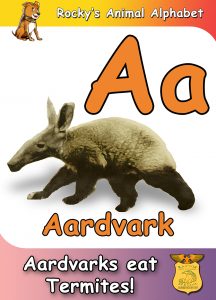 Rocky the Staffordshire; Mugambi, King of the poachers; Impisi the poacher; Vusi the poacher; Mops and Mutsumi the Rangers; Sean the Ranger; Mr. Ztork the stork; a snake; a spider; Wana the wilddog; Ikhanka the wilddogs’ mother; Lenja the father of the wild dogs; Buhle, Wana’s sister, and its hosts, Clarence, Climey, Lil’ Ted & Tiny Ted, Freddy and Jill.
Rocky the Staffordshire; Mugambi, King of the poachers; Impisi the poacher; Vusi the poacher; Mops and Mutsumi the Rangers; Sean the Ranger; Mr. Ztork the stork; a snake; a spider; Wana the wilddog; Ikhanka the wilddogs’ mother; Lenja the father of the wild dogs; Buhle, Wana’s sister, and its hosts, Clarence, Climey, Lil’ Ted & Tiny Ted, Freddy and Jill.
For older children and teenagers motivational talks accompanied by the Rocky Book Series (www.rockybooks.co.za) will teach environmental conservation and the importance of it, and, how it affects the children and their lives in the future. Each book in the Rocky Book Series leaves a different conservation message, imparting upon the students a comprehensive understanding of nature and its symbiosis and the importance of environmental morals and principles, leading to a moral nature compass for the learners. A workbook accompanies the series so that both teachers and learners can derive maximum benefit from the material.
A Rocky & Snowy cartoon series is also in production and ready to be distributed in a variety of different languages highlighting the damage caused by poachers, and portraying the good work of the rangers as they save the wildlife and bring the poachers to book, putting them behind bars.
Young adults and adults will be approached differently as talks will expose the harsher realities of the results of poaching and the effect it has on the surrounding economy.
Portions of the talks concentrate on other ways of generating income in the rural areas. A data base of convicted poachers and their prison terms will bring the harsh reality of poaching to the fore to these rural people. Contrasted to this will be the success stories of rural communities who obey the law and help turn the poachers in and generate eco–tourism. Talks about why it is imperative to save this species and others, and, how the Chinese are destroying African heritage will also feature in the education curriculum. Allied to this are leaflets and cartoon messages distributed in various African languages, and, picture cartoons for those who cannot read.
To date CDR. Shaun Chapman and Rocky, his Staffordshire bull terrier, have given over 200 talks and presentations in rural and urban schools, teaching conservation morals and principles with well over 10,000 books of the Rocky series being distributed. Allied to this are the thousands of one on one presentations preaching nature conservancy and the preservation of all creatures both great and small.
Awareness through the Medium of Print: An important aspect of anti-poaching is the awareness of the general public who can be a great help in not only fingering the poachers, syndicate members and those that derive monetary gain from the hideous act of de-horning rhinos. If everybody in South Africa is aware of the various methods poachers use to obtain these horns; grind them into powder; smuggle them out of South Africa; suddenly come into money; buy or obtain tranquilizers; buy vehicles with blood money, from store clerk to bank teller, to the next door neighbor, from gas pump jockey to jogger, from shoemaker to butcher, to baker to candlestick maker, finding these perpetrators will be an easier task. If anything that is suspicious is noted with, for example, a license plate number, catching the poachers will be possible. It is necessary for everyone to do their part. There are potentially over fifty million pairs of eyes covering South Africa.
 RAPTOR’s print media campaign takes the form of a series of advertisements with various catch phrases to tweak the conscience of as many people as possible. The magazine advertisements focus on as many different target markets as possible. Further to this, international magazines are targeted in the U.S., Great Britain and Europe, with the added component of media coverage in China, Vietnam, Indonesia, Singapore, Cambodia and other Far Eastern countries.
RAPTOR’s print media campaign takes the form of a series of advertisements with various catch phrases to tweak the conscience of as many people as possible. The magazine advertisements focus on as many different target markets as possible. Further to this, international magazines are targeted in the U.S., Great Britain and Europe, with the added component of media coverage in China, Vietnam, Indonesia, Singapore, Cambodia and other Far Eastern countries.
Some of the advertisements or advertorials are more graphic in portraying what happens to the rhinos that fall under the rifle sights of the poachers. They also include messages that refute the medicinal properties of rhino horn and the effect of the pesticides and dye injected into them, and, in the case of the lions from the Kruger, tuberculosis that has been transmitted from the cattle in Mozambique, and how, when these products are consumed, the disease is also transmitted. Another part of the media campaign is to promulgate and convince reserves to inject the pesticides into all rhino horn, rendering them valueless in the market place.
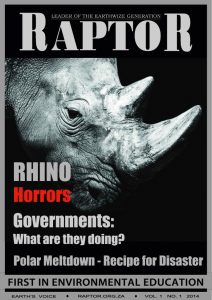 Website & E-Magazine: RAPTOR’s website not only contains information on RAPTOR’s projects and the progress of RAPTOR, but, also contains information on convicted poachers and syndicate members, what steps can be taken to negate poaching in your area, a donation facility and an E–magazine which will keep the readers updated on poaching activity and trends, and, how you can personally become involved in stemming the tide of these hideous acts of barbarism. The E–magazine not only focuses on the rhinoceros but has many sections that cover worldwide poaching trends and the wildlife involved, and where the culprits originate from and what steps should be taken to stop their illegal trade.
Website & E-Magazine: RAPTOR’s website not only contains information on RAPTOR’s projects and the progress of RAPTOR, but, also contains information on convicted poachers and syndicate members, what steps can be taken to negate poaching in your area, a donation facility and an E–magazine which will keep the readers updated on poaching activity and trends, and, how you can personally become involved in stemming the tide of these hideous acts of barbarism. The E–magazine not only focuses on the rhinoceros but has many sections that cover worldwide poaching trends and the wildlife involved, and where the culprits originate from and what steps should be taken to stop their illegal trade.
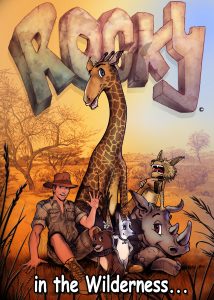 Awareness through Film and Television: Getting the concept of preservation ingrained into the psyche of humanity is no easy task, but, with the help of visual media in the form of Film and Television it is an achievable goal. RAPTOR focuses on documentaries and drama series on poaching and the effects it has on the dwindling population of rhinos and the extinction of other species caused by the Far Eastern traditional medicine trade.
Awareness through Film and Television: Getting the concept of preservation ingrained into the psyche of humanity is no easy task, but, with the help of visual media in the form of Film and Television it is an achievable goal. RAPTOR focuses on documentaries and drama series on poaching and the effects it has on the dwindling population of rhinos and the extinction of other species caused by the Far Eastern traditional medicine trade.
Initiatives planned include:
- A computer animated film, aimed at younger viewers, or, those young at heart, with strong environmental morals but in a digestible format.
- A docudrama that covers the efforts of RAPTOR to tackle the poachers, syndicates and end users of powdered rhino horn, incorporating investigation, intelligence and tactical strategies formulated to bring the perpetrators to book.
- A fictional TV series about the creation and operation of RAPTOR revolving around the main characters and their attempts to stem the trade of death washing over the remnants of a millennia age species, whose only act was to be born with two horns lusted after by Chinese and Vietnamese nationals in a frenzy of bloodletting.
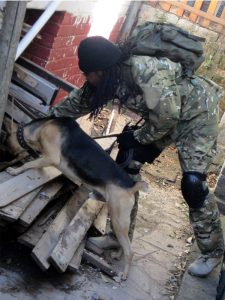 Public Service Announcements: Crucial to the success of RAPTOR’s strategy is a series of Public Service Announcements targeted at both adults and children on their respective levels of understanding. The adult targeted PSA’s will be strong and informative.
Public Service Announcements: Crucial to the success of RAPTOR’s strategy is a series of Public Service Announcements targeted at both adults and children on their respective levels of understanding. The adult targeted PSA’s will be strong and informative.
The other conservation PSA’s targeted at the younger generations will take the form of The Wild Puppet Show with characters from the series promulgating environmental conservation and the saving of the rhinoceros from extinction; other PSA’s take the form of animated cartoons.
All these PSA’s contain strong underlying messages, the main one being that we should all get involved in saving all wildlife from extinction and further to that, the preservation of all South Africa’s flora and fauna. There are two prime time PSA’s, one visually softer and more palatable for younger generations, the other, a more graphic black and white harsh, dark and ominous piece with a tough message pulling no punches.
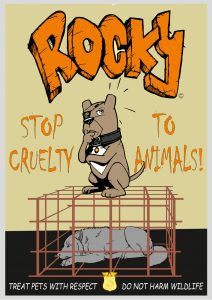 Lobbying: Chinese and Vietnamese lawmakers, magistrates and judges have to be made aware of the problems the rhino and other animals are facing. By producing reports in Chinese and other languages, and, bringing these functionaries to South Africa to see the problems first hand, change can be effected. RAPTOR is busy lobbying these functionaries to impose harsher penalties upon those trafficking in wildlife products, and, coupled with the curtailing of travel permits of those involved in poaching and the production of herbal medicine from animal products, it can hit the poachers hard. This lobbying is supplemented by printed matter and hard hitting documentaries on rhino poaching and wildlife destruction.
Lobbying: Chinese and Vietnamese lawmakers, magistrates and judges have to be made aware of the problems the rhino and other animals are facing. By producing reports in Chinese and other languages, and, bringing these functionaries to South Africa to see the problems first hand, change can be effected. RAPTOR is busy lobbying these functionaries to impose harsher penalties upon those trafficking in wildlife products, and, coupled with the curtailing of travel permits of those involved in poaching and the production of herbal medicine from animal products, it can hit the poachers hard. This lobbying is supplemented by printed matter and hard hitting documentaries on rhino poaching and wildlife destruction.
Another aspect of lobbying is liaising with the United States, Great Britain, Australia and New Zealand, and other governments’ immigration departments to ban and restrict the movements of individuals involved in, and, deriving profit from rhino horn and other wildlife products. This lobbying also extends to restrictions on imports of hunting trophies.
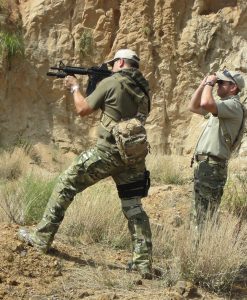 Tactical Operations: RAPTOR has many diverse tactical solutions, ranging from the deployment of Eco–Scouts around National Parks, Game Parks and Reserves to form a barrier and stationed at villages in the area. The Eco–Scouts, forming an interlocking grid remove traps and snares found in the bush in the area under their supervision. They also monitor people’s movements, noting people and vehicles, 4×4’s and quad bikes that are not normally in the area, suspicious noises during the night, suspicious people, helicopters et al. Eco–Scouts on bicycles patrol their allotted areas picking up intelligence from children and adults, building respect and trust in the communities in which they work, rewarding children with appetizers to further intelligence gathering and uncovering those involved in poaching.
Tactical Operations: RAPTOR has many diverse tactical solutions, ranging from the deployment of Eco–Scouts around National Parks, Game Parks and Reserves to form a barrier and stationed at villages in the area. The Eco–Scouts, forming an interlocking grid remove traps and snares found in the bush in the area under their supervision. They also monitor people’s movements, noting people and vehicles, 4×4’s and quad bikes that are not normally in the area, suspicious noises during the night, suspicious people, helicopters et al. Eco–Scouts on bicycles patrol their allotted areas picking up intelligence from children and adults, building respect and trust in the communities in which they work, rewarding children with appetizers to further intelligence gathering and uncovering those involved in poaching.
RAPTOR’s Wildlife Inspectors not only work directly with the Department of Fisheries and Wildlife to monitor hunts to ensure correct procedures are followed, but, they also collect data and intelligence from the Eco–Scouts and ensure they are working to the best of their abilities.
The elite anti–poaching Tactical Teams deployed by RAPTOR respond not only to emergency callouts, but they track and interdict poachers in the bush, work with Eco–Scouts and RAPTOR’s investigation teams to target and hunt down poachers and syndicates. Another angle is the predictive interception and response to interdict the poachers, with an interpretative analysis of intelligence from a variety of different sources. Since the majority of poaching takes place during full moon at night it is possible to predict the movements of poachers, giving those hunting them an idea of when and where they should pool resources to combat the poachers.
Tactical Operations also employ reciprocal links with other anti–poaching units, bringing them under the wings of RAPTOR, so to speak, thus formulating defined strategies to cope with poachers and syndicates alike. San Bushman trackers are employed to work with RAPTOR’s Tactical Units. . .
The Team also nurtures a Mozambique unit of Eco–Scouts/Wildlife Inspectors to operate on the border of the Kruger Park working in conjunction with their South African counterparts. The unit in Mozambique has to have real law enforcement teeth, and be a registered security provider/law enforcement agency with many reciprocal links related to like organizations within its borders.
Investigative Operations: Investigative protocol of RAPTOR follows the guidelines and operational procedure set by criminal investigation units such as NCIS and the FBI. The team ranges from experienced investigators to Rangers, San trackers and members with investigative potential prepared to undergo further training and courses ranging from tactical, investigative, forensics and more, given by experienced experts in the relevant fields from the FBI, NCIS, etc. Retired and currently serving members, as well as experienced anti–poaching instructors, assists in team training. The Team is about to set up the necessary reciprocal links with organizations such as Interpol, the Chinese Police Force and others to further enhance the unit’s capabilities.
An important part of the team’s success is that of rapid response and mobility to get to the crime scene as quickly as possible. One of the ways the unit has an advantage over other investigative units is the assistance of retired FBI officers spending time with RAPTOR’s criminal investigative section.
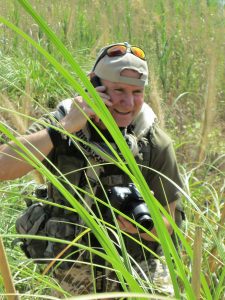 Intelligence Operations: Creating reciprocal links with other intelligence gathering organizations such as ‘E-Block Rhino Watch’ is an important part of intelligence operations for RAPTOR. These links are being created worldwide so a better overall picture is created of the poaching and markets of all animals, and, of any new trends that crop up, allowing for better planning. This also shows how animal products are incorporated into other criminal activities such as human trafficking, drugs, vehicle hijacking syndicates and prostitution.
Intelligence Operations: Creating reciprocal links with other intelligence gathering organizations such as ‘E-Block Rhino Watch’ is an important part of intelligence operations for RAPTOR. These links are being created worldwide so a better overall picture is created of the poaching and markets of all animals, and, of any new trends that crop up, allowing for better planning. This also shows how animal products are incorporated into other criminal activities such as human trafficking, drugs, vehicle hijacking syndicates and prostitution.
The intelligence section cultures informants through the Eco–Scouts to obtain needed information about poachers, buyers and facilitators. They use a system of rewards such as bicycles, footballs, cell-phones etc. Another aspect is to use the poachers themselves who are offered rewards for turning in buyers and others involved in poaching networks. The intelligence section also conducts undercover operations gathering intelligence and profiling poachers, syndicates, rangers and their relatives, conducting background checks and liaising with cell-phone companies, banks etc.
The profiling of Chinese and Vietnamese tourists is a necessary part of intelligence gathering; checking criminal databases in the Far East, South Africa and their country of origin and cross referencing to check out hunting concessions of particular animals to root out those with criminal intentions. The intelligence section pieces together bits of information building a criminal data base of poachers and syndicates and those assisting international poaching operations, in order to red flag them when crossing borders. One of its duties is to find out places of distribution of these poached animal products, in the Far East specifically.
Intelligence is tasked with gathering information to form a clear picture of what is done to the horns and how they are smuggled into the Far East for distribution.
One of the Hi–Tech methods utilized is micro–chip recognition equipment that scans and records any chips in its vicinity. This also leads to the micro–chipping of all South African horns. Other Hi–Tech surveillance equipment and services such as satellite data from international agencies willing to assist our anti–poaching cause is used in an attempt to catch poachers in the act.
The Intelligence section is responsible for passing information on to Parks and Reserves where needed, also, ways in which the horns can be made valueless in the marketplace.
One of the intelligence section’s focal points is to collate anti–poaching data so we may formulate more effective strategies and tactics against the poachers and syndicates.
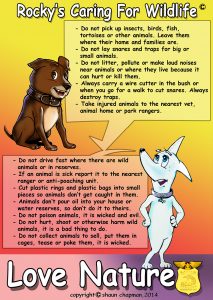 Psychological Operations or ‘Psyops’: Another important element in RAPTOR’s fight against poaching is its psychological operations. Psyops conducts operations in South Africa, China, Vietnam, Thailand, Singapore, Indonesia and Malaysia. South African operations utilize various methods to undermine poachers, syndicates and individual’s efforts to obtain rhino horn and other animal products. One avenue is getting traditional healers and African prophets like to extol the virtues of keeping the wildlife alive instead of displeasing the ancestors and the Great Father, by destroying an important part of African heritage.
Psychological Operations or ‘Psyops’: Another important element in RAPTOR’s fight against poaching is its psychological operations. Psyops conducts operations in South Africa, China, Vietnam, Thailand, Singapore, Indonesia and Malaysia. South African operations utilize various methods to undermine poachers, syndicates and individual’s efforts to obtain rhino horn and other animal products. One avenue is getting traditional healers and African prophets like to extol the virtues of keeping the wildlife alive instead of displeasing the ancestors and the Great Father, by destroying an important part of African heritage.
Many animals are sacred beasts in traditional lore and great harm will befall those that kill them, especially if they assist foreigners in taking their bodies and spirits to a foreign land. . .Traditional leaders such as Credo can act as figureheads to convince rural people to turn poachers in. . . In the Far East a different tack can be taken as we dehumanize and belittle those that use the products from African wildlife, and, bring to the fore the fact that lion bones and marrow from the Kruger transmit tuberculosis which has been transmitted to the Kruger by cattle from Mozambique. Most lions in Kruger have a shortened lifespan because of this disease, and, if these animal products are ingested it is then transmitted to the humans using the products.
Various other arguments explaining forcefully why it is unhealthy to take rhino powder and how it does not fight cancer, this, coupled with scientific data presented in an absorbable format using leaflets, advertising posters and PSA’s etc., “Using rhino horn doesn’t make you a man, it just makes you an inhuman monster,” as does speculating with such products. This campaign has to be broadened to cover other areas of the developed world where the funds to drive this poaching are originating from.
RAPTOR Psyops utilizes everything at its disposal to discourage and stop poaching, speculating by buying and selling, and, using the products in the Far East. How dyes and pesticides are being injected into rhinoceros horn which makes those using rhino horn powder ill. The use of superstition to unnerve the users of animal products from Africa in the Far East is another angle, playing on their fears and weaknesses. An analysis of other strategies utilized in other campaigns, political or otherwise, is being made, modified and adopted.
 Mission, Goals, Objectives and Desired Outcomes: RAPTOR’s mission is to curtail the poaching of rhino and other endangered species in South Africa and the world at large; to form a complete picture of wildlife abuse, including poaching and the sale of products and parts from these animals; to uncover the nodes through which these products pass; to create awareness so as to mobilize the entire nation of South Africa and other nations to fight this destruction of flora and fauna; to train and create employment in nature conservation for underprivileged rural community members and impoverished South African citizens; to educate rural communities on the value of nature and the wildlife that inhabit it; to expose syndicates and place the poachers behind bars; to create a barrier around National Parks and Game Reserves with both RAPTOR’s Environmental Officers and rural communities to prevent the free passing of poachers and syndicate members; to preach the message of conservation to both young and old, imparting environmental morals and principles to rural communities; to deploy an effective force of nature scouts and tactical wildlife response teams to tackle poachers; to empower our members through education, instilling in them the need to preserve our ecology; to build a training establishment and headquarters that enables RAPTOR to fulfil its various functions; to provide air support that will hunt down the poachers; to build effective investigative and intelligence units; to create awareness that will put pressure upon poachers and syndicates, create far reaching campaigns that will stem the tide of greed and wont; to get governments to respond harshly to the perpetrators; to stop poaching for good.
Mission, Goals, Objectives and Desired Outcomes: RAPTOR’s mission is to curtail the poaching of rhino and other endangered species in South Africa and the world at large; to form a complete picture of wildlife abuse, including poaching and the sale of products and parts from these animals; to uncover the nodes through which these products pass; to create awareness so as to mobilize the entire nation of South Africa and other nations to fight this destruction of flora and fauna; to train and create employment in nature conservation for underprivileged rural community members and impoverished South African citizens; to educate rural communities on the value of nature and the wildlife that inhabit it; to expose syndicates and place the poachers behind bars; to create a barrier around National Parks and Game Reserves with both RAPTOR’s Environmental Officers and rural communities to prevent the free passing of poachers and syndicate members; to preach the message of conservation to both young and old, imparting environmental morals and principles to rural communities; to deploy an effective force of nature scouts and tactical wildlife response teams to tackle poachers; to empower our members through education, instilling in them the need to preserve our ecology; to build a training establishment and headquarters that enables RAPTOR to fulfil its various functions; to provide air support that will hunt down the poachers; to build effective investigative and intelligence units; to create awareness that will put pressure upon poachers and syndicates, create far reaching campaigns that will stem the tide of greed and wont; to get governments to respond harshly to the perpetrators; to stop poaching for good.
Operational Vision: RAPTOR is a non-profit anti–poaching organization intent on stemming the tide of poaching in South Africa, in particular rhino poaching. RAPTOR utilizes a wide variety of strategies to combat and restrict poaching activities.
Using 4×4 vehicles, including pick–ups, double cabs, armored Hummers, RAPTOR, amongst all its other duties, provides travelling environmental conservation and anti–poaching workshops that distribute books and conservation literature to rural areas. The workshops include puppet shows for the children in these areas, which, not only provide entertainment, but have a strong anti–poaching message utilizing some of the characters in the Rocky Book Series such as Mukama the rhino and Kakama, his father; Njovu the little female elephant and Ndlovu her father; evil poachers and their Chinese buyers; Rocky and his friend Igola, the serval cat; Hubesi the lion and his comrades Sato and Njoka, and not forgetting of course, Rocky’s father Sean, and Bo, his San Bushman friend, /Qui and /Gao, and, Shogi, a wise old female wild dog.
RAPTOR operates from a head office in Johannesburg and satellite tactical operations centres. The office in Johannesburg coordinates tactical operations in other places around South Africa. The office in Johannesburg is responsible for media liaison and production of conservation literature.
RAPTOR uses the latest surveillance technology from the United States, including cameras and chip recognition equipment, plus state of the art forensic equipment to type cast and profile poachers. This enables RAPTOR to build files and cases against perpetrators, suspects and syndicates. We not only use modern technology, but, good old fashioned tracking by San trackers to hunt the hunters. . .
When qualified, individuals from rural communities return to act as environmental officers, collecting intelligence on poaching activity and destroying snares and traps. When necessary, they alert RAPTOR of criminal poaching activity that needs to be handled by the interdiction unit. Bushman trackers operating with an elite RAPTOR force interdicts the poachers, arrests them and hands them over to the justice system of South Africa.
The force of dedicated conservationists duties also includes bush patrols, actively seeking poachers, liaising with the rural communities, acting on any and all information on poaching, destruction of traps and snares, disrupting as much poaching activity as possible, monitoring the movements of poachers and building profiles on them. The combined force utilizes everything at their disposal to identify and track nefarious individuals. Their mission profiles include the monitoring of canned rhino hunting and hunting used as a pretext to avoid customs regulations.
Raptor Conservation Group Core Members
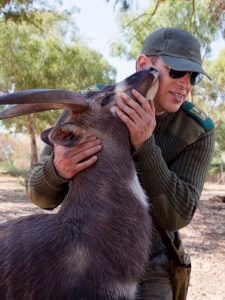 CDR. Shaun Chapman: The chairman of Raptor Conservation Group is CDR. Shaun Chapman, he will drive marketing and fundraising, coordinating and supplying the various marketing teams with promotional and fundraising material and will also take the lead in such activities. He will run promotional stands and the large venues and shows. Shaun writes the conservation material, creates, is an ideas man, is the backbone of Raptor Conservation Group and will come up with strategic solutions. He is highly motivated and will not stop until the work is done. Author, marketer, creator, ideas man, anti-poaching advocate, conservationist, promotions exponent, gives talks on conservation, motivates, a leader of men in combat and in the office, a do anything, strategist, designer, photographer, artist, a one man think-tank, bottom line . . . if it has to be done . . . Shaun will do it and complete the task to a high standard. For more information about his accomplishments see the following websites:
CDR. Shaun Chapman: The chairman of Raptor Conservation Group is CDR. Shaun Chapman, he will drive marketing and fundraising, coordinating and supplying the various marketing teams with promotional and fundraising material and will also take the lead in such activities. He will run promotional stands and the large venues and shows. Shaun writes the conservation material, creates, is an ideas man, is the backbone of Raptor Conservation Group and will come up with strategic solutions. He is highly motivated and will not stop until the work is done. Author, marketer, creator, ideas man, anti-poaching advocate, conservationist, promotions exponent, gives talks on conservation, motivates, a leader of men in combat and in the office, a do anything, strategist, designer, photographer, artist, a one man think-tank, bottom line . . . if it has to be done . . . Shaun will do it and complete the task to a high standard. For more information about his accomplishments see the following websites:
www.rockyinthewilderness.com – www.rockybooks.co.za – www.thebigearthquake.com – www.hopesofvictory.com – www.shaunchapman.co
For a visual perspective of some of his books go to Youtube: Rocky in the Wilderness; Solar Princess and The Spy Who Hated Me!
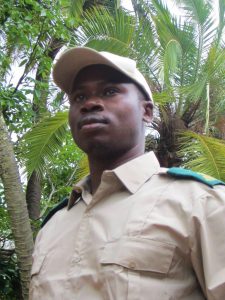 LCDR. Christopher Tonoh: Christopher is focusing primarily on funding acquisition from Australia, the USA and Saudi Arabia at present from recently acquired connections. Christopher is also a senior director of our newly formed company RAPTOR SPECIAL FORCES (Ltd), through which training and SETA work can be done. He has also made some inroads in procuring potential sponsorship from the United Nations, which is still in process. Another main area of his is on-the-ground anti-poaching and is as ready with a joke as he is with an M-4 loaded with 5.56 mm rounds of steel jacketed destruction . . . Poachers beware! His love of God is compounded by a love of the environment.
LCDR. Christopher Tonoh: Christopher is focusing primarily on funding acquisition from Australia, the USA and Saudi Arabia at present from recently acquired connections. Christopher is also a senior director of our newly formed company RAPTOR SPECIAL FORCES (Ltd), through which training and SETA work can be done. He has also made some inroads in procuring potential sponsorship from the United Nations, which is still in process. Another main area of his is on-the-ground anti-poaching and is as ready with a joke as he is with an M-4 loaded with 5.56 mm rounds of steel jacketed destruction . . . Poachers beware! His love of God is compounded by a love of the environment.
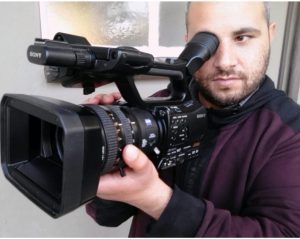 LT. Karam Ezzideen: LT. Karam Ezzideen is an eager new edition to the team. He obtained a BA in Film and Video at the University of Wales, Newport. His focus is primarily in creating visual educational conservation material, and related environmental drama anti-poaching material for Raptor Conservation Group. His skills in directing and script writing are unsurpassed, and combined with his can-do attitude, make him an integral and much needed member of the Raptor Conservation Group.
LT. Karam Ezzideen: LT. Karam Ezzideen is an eager new edition to the team. He obtained a BA in Film and Video at the University of Wales, Newport. His focus is primarily in creating visual educational conservation material, and related environmental drama anti-poaching material for Raptor Conservation Group. His skills in directing and script writing are unsurpassed, and combined with his can-do attitude, make him an integral and much needed member of the Raptor Conservation Group.
 Joseph Lungisani Dube: Joe, a director of Raptor Conservation Group, has strong beliefs about the survival of species on planet earth. His background is in graphic design at which he excels, but his love of God and nature compelled him to get involved in wildlife and environmental protection, hence his attachment to Raptor Conservation Group.
Joseph Lungisani Dube: Joe, a director of Raptor Conservation Group, has strong beliefs about the survival of species on planet earth. His background is in graphic design at which he excels, but his love of God and nature compelled him to get involved in wildlife and environmental protection, hence his attachment to Raptor Conservation Group.
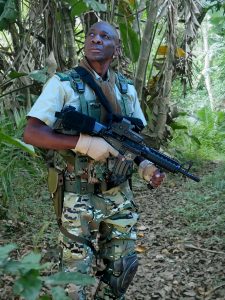 Kayanja Nakirenzi Mark Kayiwa: Mark, being a headmaster for a small private school, will focus on environmental training once our education, training and rehabilitation facility is set up. He is a kind hearted soul and supporter of our planet and the differing environs and habitats it supports. His one main wish is that people in the world would stop destroying our environment and killing the wildlife that the Earth supports. He is part of our Think-Tank and has a good network of connections which has assisted Raptor Conservation Group.
Kayanja Nakirenzi Mark Kayiwa: Mark, being a headmaster for a small private school, will focus on environmental training once our education, training and rehabilitation facility is set up. He is a kind hearted soul and supporter of our planet and the differing environs and habitats it supports. His one main wish is that people in the world would stop destroying our environment and killing the wildlife that the Earth supports. He is part of our Think-Tank and has a good network of connections which has assisted Raptor Conservation Group.
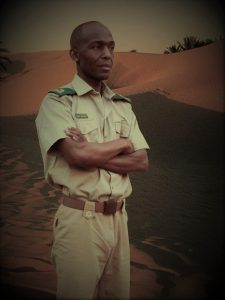 Collin Semakula: Collin focuses on the registration and other necessary paperwork parts of Raptor Conservation Group including our annual report returns and trademarks. Collin also handles all the necessary documentation and annual submissions for ROCKYFILM (Ltd) both in South Africa and in Great Britain. His main area of focus is getting all the component parts of our projects on a good sound financial footing . . . When it comes to accounting and all related disciplines, there is no one better.
Collin Semakula: Collin focuses on the registration and other necessary paperwork parts of Raptor Conservation Group including our annual report returns and trademarks. Collin also handles all the necessary documentation and annual submissions for ROCKYFILM (Ltd) both in South Africa and in Great Britain. His main area of focus is getting all the component parts of our projects on a good sound financial footing . . . When it comes to accounting and all related disciplines, there is no one better.
 Dennis Udoh: Dennis handles publishing in the USA, with an especial focus on the ROCKY ADVENTURE SERIES of books that teach conservation morals and environmental principles. He is based in Dallas, Texas. He is a great supporter of our work and has a strong belief that the books will make a difference to how people perceive nature and that they hold the seeds to mankind’s future. He has been instrumental with our current US publisher in providing exposure and credibility for our work on an international scale, due to its far reach through the internet including the USA, Britain, Canada, China, Norway, Denmark, South Africa, Europe, Australia & New Zealand, Central and South America . . . The book ‘Rocky in the Wilderness’ and others in the Shaun Chapman stable have YouTube videos and are available from Barnes & Noble’s and Goodreads in Great Britain . . . all because of Dennis’s hard work and unflappable confidence in our work and ability to change our world.
Dennis Udoh: Dennis handles publishing in the USA, with an especial focus on the ROCKY ADVENTURE SERIES of books that teach conservation morals and environmental principles. He is based in Dallas, Texas. He is a great supporter of our work and has a strong belief that the books will make a difference to how people perceive nature and that they hold the seeds to mankind’s future. He has been instrumental with our current US publisher in providing exposure and credibility for our work on an international scale, due to its far reach through the internet including the USA, Britain, Canada, China, Norway, Denmark, South Africa, Europe, Australia & New Zealand, Central and South America . . . The book ‘Rocky in the Wilderness’ and others in the Shaun Chapman stable have YouTube videos and are available from Barnes & Noble’s and Goodreads in Great Britain . . . all because of Dennis’s hard work and unflappable confidence in our work and ability to change our world.
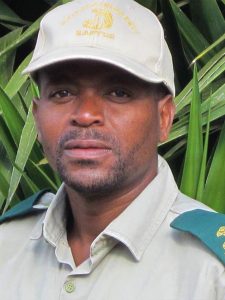 Nikkie Sibanda: Nikkie is a very enthusiastic member of Raptor Conservation Group and is one of our original team members. If we need him for a project he will assist with whatever he can do . . . There aren’t many people in the world today like Nikkie!
Nikkie Sibanda: Nikkie is a very enthusiastic member of Raptor Conservation Group and is one of our original team members. If we need him for a project he will assist with whatever he can do . . . There aren’t many people in the world today like Nikkie!

Charmaine Chapman: In charge of our Humanitarian Aid section is Charmaine Chapman, a trained counselor with 3 years experience. One of her passions is caring for the elderly, the young and victims of abuse. She is highly motivated and wants to help, so is a welcome addition to our team.
 Rocky Chapman: Rocky, a Staffordshire and Shaun’s constant companion, is our mascot and the heart and soul of RAPTOR. ‘Rocky in the Wilderness’ was the first book in the series to be published chronicling Rocky’s adventures. Each story covers a period in Rocky’s life and teaches environmental morals and principles through the story line . . . Of courage, Rocky’s is boundless; of love, his heart is an endless ocean . . . That’s Rocky . . . Hugs and kisses from Miss South Africa, Nicole Flint . . .
Rocky Chapman: Rocky, a Staffordshire and Shaun’s constant companion, is our mascot and the heart and soul of RAPTOR. ‘Rocky in the Wilderness’ was the first book in the series to be published chronicling Rocky’s adventures. Each story covers a period in Rocky’s life and teaches environmental morals and principles through the story line . . . Of courage, Rocky’s is boundless; of love, his heart is an endless ocean . . . That’s Rocky . . . Hugs and kisses from Miss South Africa, Nicole Flint . . .
How do we see the future of RAPTOR? We envision Eco–Scouts and RAPTOR centers around South Africa where they will best serve and protect wildlife; we see governments and justice systems around the Earth taking the initiative and instituting severe penalties on poachers and traffickers in wildlife and animal body parts; we see RAPTOR spreading far and wide, being a solution to this problem.
In conclusion, our vision is one that we hope you will share and make a reality, and, become involved in, whether financially supportive or active participant, for how long can the rhino continue to exist on Earth, let alone any species, when it is being hunted to extinction by eco–terrorists, inhuman people armed with AK–47’s and RPG’s. The bullets, snares, traps and poison poachers use cause untold suffering across a broad spectrum of wildlife. So please help us make a difference and stop this slaughter!
